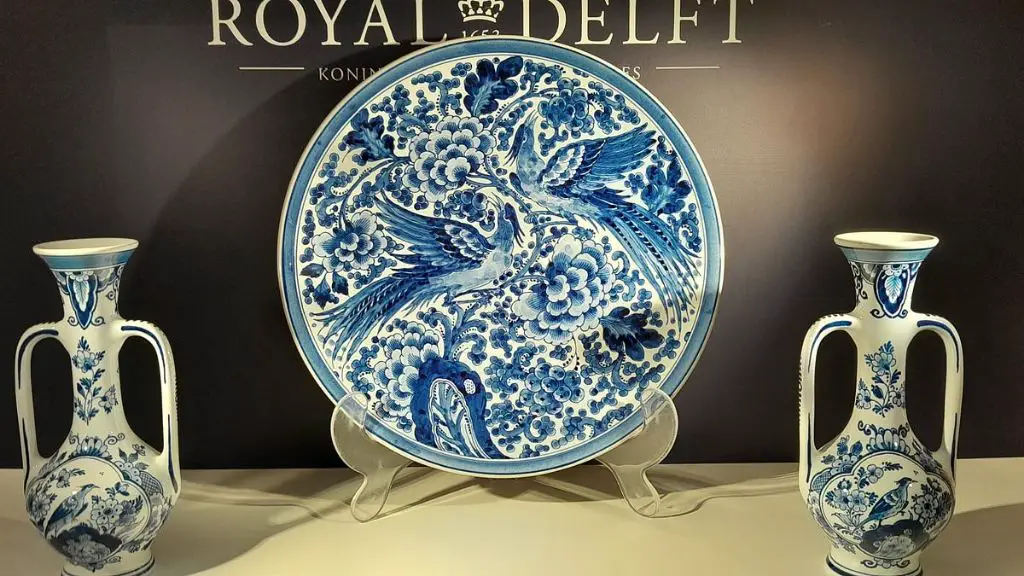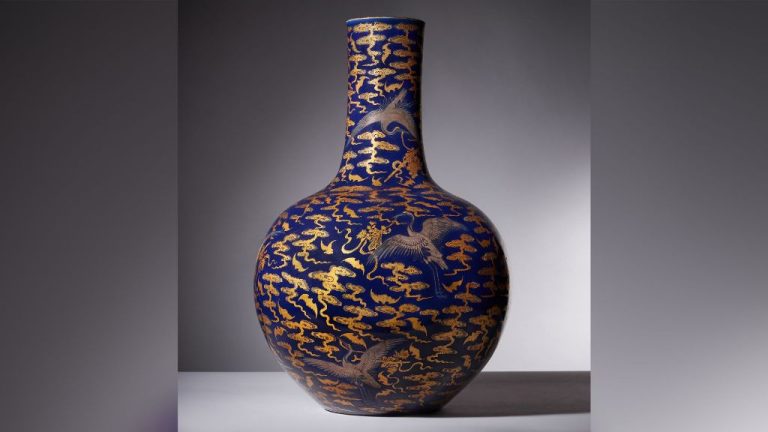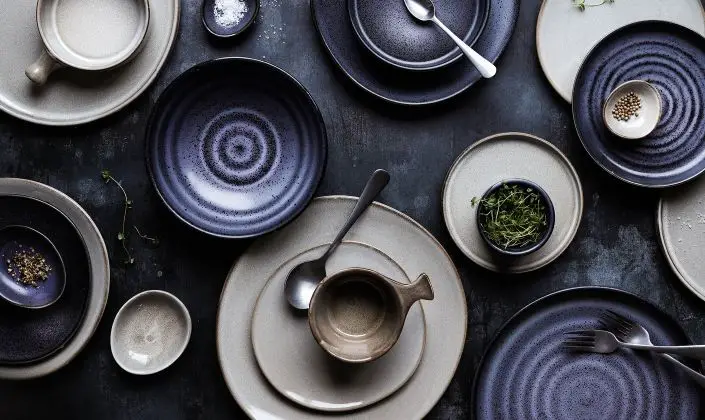How Do You Date Delft Blue Pottery?
Delft Blue pottery refers to the iconic blue and white tin-glazed earthenware that originated in the city of Delft in the Netherlands in the early 17th century. It emerged as an alternative to Chinese porcelain imports and grew to define Dutch Golden Age artistry and craftsmanship. Delft potters creatively blended Oriental and Italian influences to develop the recognizable Delft Blue style featuring naturalistic patterns and scenes in a distinctive “Holland Blue” palette.
Delft Blue remains culturally and artistically significant for several reasons. Its emergence coincided with the Dutch Golden Age, allowing it to represent the prosperous Netherlands at its peak. The detailed scenes offer a visual record of Dutch life and interests in the 17th-18th centuries. As Delft Blue grew popular abroad, it also transmitted Dutch tastes across Europe and reflected Holland’s ascendency as a trading powerhouse. While the rise of industrialization stalled Delft’s traditional craft, its revival in the 19th century preserved an important Dutch heritage and redefined Delft Blue as quintessentially “Dutch.”
Today, Delftware continues to be produced by just a few factories in Delft and remains a celebrated expression of Dutch national identity and artistic accomplishment. Museums like the Prinsenhof in Delft and avid collectors worldwide attest to Delft Blue’s enduring appeal.
Dating Methods for Delft Blue
There are several methods that can be used to date Delft Blue pottery pieces, including analyzing maker’s marks, style and technique changes over time, and shifts in color palette.
Maker’s marks are one of the most useful dating tools. Starting in the mid-17th century, Delft factories began marking pieces with a code indicating the year of production. Marks included letters, numbers, and symbols. For example, pieces marked with a * were made in 1722 at De Porceleyne Fles factory. Marks can identify the production year and sometimes the specific factory.[1]
Studying the stylistic and technical aspects of a Delft Blue piece is another dating method. Earlier pieces from the 1600s have cruder designs and thicker glazes. By the mid-18th century, motifs were more intricate with finer brushwork. Pieces transitioned from using pouncing to trace designs to freehand painting. Understanding these shifts over time helps date items.[2]
The pigments used also changed, affecting the color palette. Cobalt blue dominated early pieces. Later on, brighter blues, purple-tinged manganese, tomato reds, and lemon yellow became popular. Dating is possible by identifying the mix of colors.[3]
Combining maker’s marks, stylistic clues, and color analysis allows reliable dating of Delft Blue antique pieces.
[1] https://museum.royaldelft.com/en/discover-the-collection/year-codes-tradem-marks/
[2] https://thepotterywheel.com/delft-pottery-marks/
[3] https://royaldelft.com/en/year-codes-trade-marks/
Early Delft Blue (1620s-1650s)
The earliest period of Delft Blue pottery originated in the 1620s and spanned into the 1650s. These early pieces were heavily influenced by Chinese porcelain that was being imported to Europe at the time. The potters in Delft were attempting to imitate the coveted blue and white Chinese porcelain style.
Some key characteristics and styles of early Delft Blue include:
- Thick cobalt blue designs outlined in manganese purple
- Oriental-style imagery like pagodas, bridges, people in oriental dress
- Symmetrical floral patterns
- Distinctive pottery shapes like kraak, bottles, apothecary jars
- Heavier earthenware clay body rather than porcelain
Common maker’s marks found on early Delft include a capital A, D, or H within a shield, which stood for Adrianus Kocx, De Grieksche A (The Greek A), and De Porceleyne Hori (The Porcelain Horse). The De Porceleyne Fles (The Porcelain Bottle) factory had a bottle within a shield.
Some examples of early Delft Blue from this period include the Grolle Jug with its Chinoiserie decoration from 1653 and the Pair of Kraak style Dishes from the 1650s with their blue dash border and central flower motif.
Mid 17th Century (1650s-1675)
The 1650s through 1675 marked a period of rapid growth and innovation in Delft pottery. As Delftware gained popularity, more potteries opened to meet growing demand. Advancements in firing technology allowed potters to create thinner, lighter pieces with finer details. Stylistically, Delft ware transitioned from imitation Chinese porcelain towards more localized Dutch scenes and motifs.

Notable technical innovations during this time include the development of a clear lead glaze that allowed for brighter cobalt blue coloring. The use of square Delftware tiles as wall decorations also emerged. As kilns improved, potters could produce thinner, lighter pieces that were less likely to crack or break during firing. This enabled more delicate spout work and intricately molded designs.
Many new potteries opened up in Delft, including De Grieksche A (The Greek A) factory, De Paeuw (The Peacock), De Porceleyne Fles (The Porcelain Bottle), and De Pauw (The Peacock). More individual potters and plateelbakkers began marking their intricate pieces with a monogram or sign.
The growth of the Delftware industry transformed the town of Delft. By 1675, over 30 potteries were operating, making Delft a center of ceramic production renowned across Europe. The Delftware style also evolved from imitating Chinese blue and white porcelain to incorporating more familiar Dutch scenes of windmills, fishing boats, flowers, and animals. Delftware retained its blue and white palette but took on a more distinctly Dutch style and aesthetic.
Late 17th Century (1675-1700)
The late 17th century marked the height of Delft Blue popularity and production. As Delft wares gained fame, they were exported throughout Europe and even reached markets as far as China and the West Indies. Common export pieces from this period include plates, vases, and tiles. Designs featured intricate blue motifs on a white background, with popular imagery including Chinese figures, flowers, insects, and outdoor scenes.
By the 1680s, over 30 factories were producing Delft pottery in the city. Thousands of pieces were created daily for local use and export. The scale of production during this time led to some decline in quality and care. Standardized molds and production techniques were implemented to keep up with demand. Still, Delftware from the late 1600s represents the pinnacle of classic Dutch Delft.
As Delft Blue gained acclaim across Europe, it began influencing ceramic styles in other countries like France and England. European artisans aimed to imitate the white and blue palette of Delft. They also borrowed and adapted some of the common Delftware motifs like Chinoiserie scenes with Asian figures. While foreign potters created their own regional variations, much inspiration stemmed from the late 17th century heyday of Delft production. As noted by this Delft tile, the period exemplified the iconic blue and white Delftware aesthetic.
18th Century Delft Blue
The 18th century brought several changes to the Delft pottery industry. As porcelain from China became increasingly popular in Europe, Delft potters adapted their styles and techniques to compete.
One innovation was the development of “clobbered” wares, which imitated the crackled glaze of Chinese porcelain. Potters applied a clear lead glaze over the already fired tin-glazed surface, then reheated the wares to intentionally crack the glaze. This technique became popular in the 1720s-1740s.[1]
Delft potters also began using brighter cobalt blues and Japanese Imari-inspired color palettes of red, green, and gold to appeal to changing tastes. Decoration became increasingly ornate with chinoiserie scenes depicting Chinese figures and buildings.[2]
By the mid-18th century, Delft potteries were in decline due to falling exports and overseas competition. Only a few major factories remained in production by the end of the 1700s.
Revival Period (19th Century)
Delft blue pottery nearly went extinct in the late 18th century, but experienced a revival in the 19th century. This was known as the Delft Blue Revival or Delfts Blauw Revival period. Several factors contributed to this revival:
In the early 1800s, after the Napoleonic Wars ended, there was a resurgence of Dutch nationalism and pride in traditional crafts like Delft blue pottery. The opening of the Rijksmuseum in Amsterdam in 1885 also sparked new interest. Delftware fit with 19th century decorative tastes for Rococo and other revival styles.
The most famous Delft blue pottery factory during the 19th century Revival was De Porceleyne Fles (The Porcelain Bottle), founded in 1653 but revived in 1836. Other key Delft factories were De Distel (The Thistle) and Het Prinsenhof (The Prince’s Court). Artists like Joost Thooft experimented with brighter cobalt blues and added colorful floral patterns influenced by the Orient.
To identify 19th century Delft, look for brighter blues and busier scenes like windmills, fishing villages, biblical motifs, or scenes copied from 17th century Delft. The clay is also thicker than 17th century Delft. Marks on the bottom help date pieces, like De Porceleyne Fles mark with “DF” entwined letters (Example).
Delft Blue in the 20th Century
Delft Blue pottery continued to be produced in the 20th century, mainly for tourists and collectors. The designs and quality were not as elaborate as earlier periods, but there was still a market for affordable Delft Blue pieces.
Marks and identification on 20th century Delft Blue can help date pieces. The De Porceleyne Fles factory, which opened in 1653, was still producing Delft in the 1900s. Their mark changed over time, so identifying the mark style can date a piece. Other factory marks to look for include De Metaale Pot, De Candelaar, De Distel, and De Oude Delft.
In the early 20th century, many imitations of Delft pottery emerged, made in countries like Portugal, Italy and Japan. These mimic the blue and white style but often have telltale signs like different clay color and markings. Examining small details is key to identifying true 20th century Dutch Delft Blue versus imitations.
Evaluating and Dating Pieces
When trying to determine the age and value of a piece of Delft pottery, there are several key factors to look for:
One indicator is the style and design. Earlier pieces from the 17th century feature more simplicity in motif and color palette. Later pieces become more elaborate and colorful. Styles also shift with popular trends over time. Comparing against dated reference books can help pinpoint the era.
The quality of painting is another sign of age. Earlier pieces have cruder brushwork with thick outlines, while later refinements in technique allow for finer details and blurred edges. Complexity of scene and precision of rendering generally increase over time.
You can also examine the glaze. Earlier Delft has a bluer-toned glaze compared to warmer, greener hues in later eras. Glaze formulas and methods evolved, affecting the final surface appearance.
The clay body provides clues through its color and thickness. Thicker, redder bodies were used in early Delft before refinement led to thinner, whiter porcelain-like bodies.
Marks on the bottom can sometimes indicate the Delft factory, but many pieces went unmarked. Comparing identifiable marks against reference charts helps date production years.
Wear, repairs, damage, and restorations must be weighed against the overall rarity and quality. Well-preserved pieces in pristine condition command higher prices.
Consulting valuation guides, auction records, antique experts, appraisers, and dealers can all help accurately date and assess the value of Delft ware.
Resources for Dating Delft Blue
There are many helpful resources available for properly identifying and dating Delft blue pottery pieces. Some key resources include:
Books
Some of the most authoritative books for identifying Delft include:
– Discovering Dutch Delftware by Ann Arfaa. This extensive guide contains over 600 photographs and is considered one of the best references for identifying Delft.
– Dutch Delftware in the Fitzwilliam Museum by Simon J.V.Stokstad. Provides history and full color photos of Delft in this prominent museum collection.
– Dutch Delftware by F.H. Hudig. A classic general reference book covering major potteries and stylistic periods.
Online Databases
Helpful online resources include:
– The Royal Delft site contains a database of factory marks and dates.
– Delftsaardewerk.nl offers an index of known Delft marks and identifiers.
Museums
Key museum collections to view Delft pottery include:
– The Princessehof National Museum of Ceramics in Leeuwarden.
– The Boijmans Van Beuningen Museum in Rotterdam.
– The Fitzwilliam Museum in Cambridge.
Consulting with experts like antique dealers, collectors, and museum curators can also provide valuable insights into properly identifying and dating Delft pieces.



